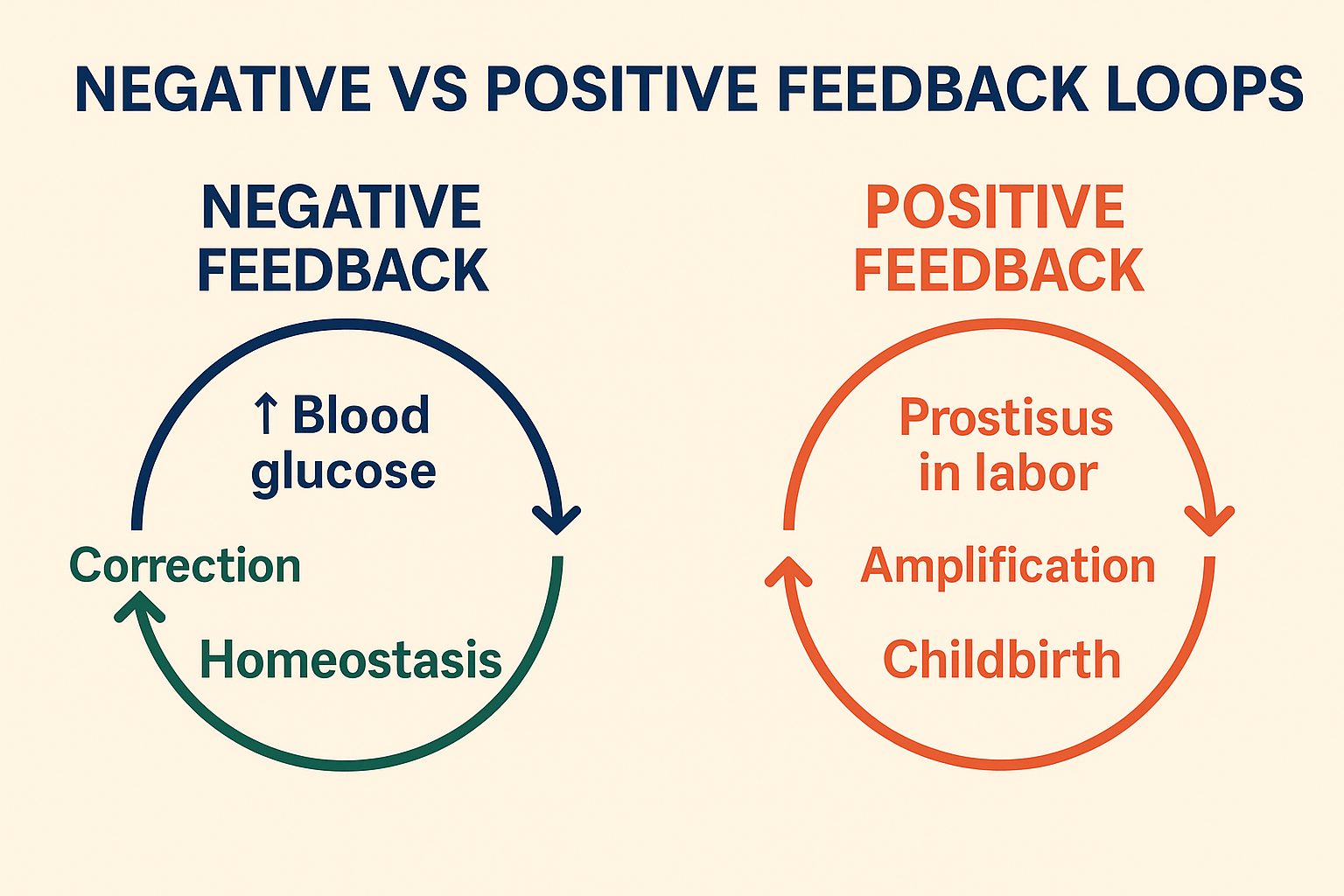Negative vs Positive Feedback Loops: MCAT Physiology Fundamentals
The MCAT expects you to understand how the body maintains balance through feedback loops. These systems keep variables like temperature, pH, blood glucose, and hormones in check. Today, we’ll clearly break down negative vs positive feedback, how they work, and how to recognize them in passage-based MCAT questions.
🔁 Negative vs Positive Feedback: Key Differences
| Feature | Negative Feedback | Positive Feedback |
|---|---|---|
| Direction of response | Opposes initial stimulus | Amplifies the initial stimulus |
| Goal | Maintain homeostasis | Drive rapid change to completion |
| Common examples | Blood glucose, temperature, BP | Labor, ovulation, blood clotting |
| Stability | Promotes stability | Temporarily disrupts stability |
🧠 MCAT Tip: The body uses negative feedback far more commonly. Positive feedback is rare, but memorizing a few key examples is crucial.
🧬 Negative Feedback Examples
| Process | Stimulus | Feedback Action |
|---|---|---|
| Blood glucose | ↑ Glucose after eating | Insulin released → lowers blood sugar |
| Thyroid hormone | ↓ T3/T4 levels | ↑ TSH release → thyroid stimulated |
| Cortisol regulation | ↑ Cortisol | ↓ CRH and ACTH (HPA axis suppression) |
✅ These loops aim to restore balance and return to a set point.
🔊 Positive Feedback Examples (Must-Memorize)
| Process | Trigger | Amplified Effect |
|---|---|---|
| Labor (parturition) | Fetal pressure on cervix | Oxytocin ↑ → more uterine contractions |
| Ovulation | Rising estrogen levels | LH surge → ovulation |
| Blood clotting | Platelet binding to injury | Clotting factors → more platelet recruitment |
🧠 These loops have a “breaking point”—they stop when the stimulus is removed (e.g., baby delivered, clot sealed).
🧪 MCAT-Style Passage Insight
✅ Experimental Example:
“After cortisol levels rise, ACTH and CRH levels drop…”
→ This is negative feedback in the hypothalamic-pituitary-adrenal axis.
✅ Question Prompt:
“What type of regulation is shown when estrogen triggers LH surge?”
→ Positive feedback — estrogen triggers more LH, not suppression.
🧠 Final MCAT Tips
Know 2–3 classic positive feedback loops (labor, ovulation, clotting)
Always ask: “Is the response correcting or amplifying the signal?”
Link feedback loops to hormonal axes (HPG, HPA, thyroid)
Expect figure-based questions on feedback dynamics
✅ Call-to-Action (CTA)
Simplify tricky feedback systems with King of the Curve’s visuals, mnemonics, and adaptive quizzes. Master the loops that control everything from metabolism to reproduction.
Frequently Asked Questions (FAQs)
-
Aim for 4-6 focused hours, ensuring you incorporate breaks to avoid burnout.
-
Practice mindfulness techniques, take practice exams under realistic conditions, and maintain a balanced lifestyle.
-
Set short-term goals, seek support from mentors, and reward yourself for small achievements.
-
Regular exercise improves focus, reduces stress, and enhances overall mental clarity.
-
KOTC offers personalized learning tools, gamification features, and adaptive question banks to help students stay on track without burnout.


